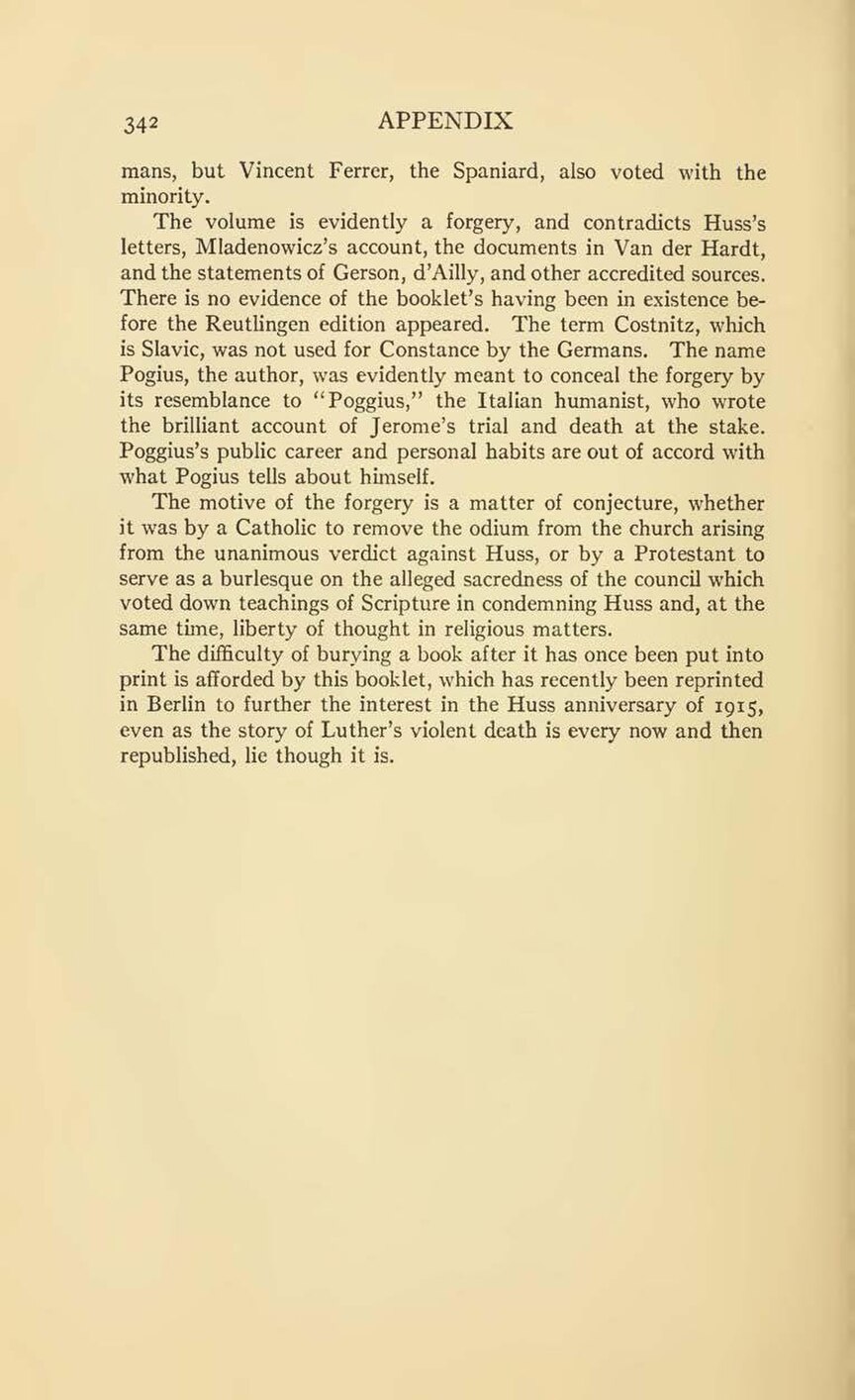mans, but Vincent Ferrer, the Spaniard, also voted with the minority.
The volume is evidently a forgery, and contradicts Huss’s letters, Mladenowicz’s account, the documents in Van der Hardt, and the statements of Gerson, d’Ailly, and other accredited sources. There is no evidence of the booklet’s having been in existence before the Reutlingen edition appeared. The term Costnitz, which is Slavic, was not used for Constance by the Germans. The name Pogius, the author, was evidently meant to conceal the forgery by its resemblance to “Poggius,” the Italian humanist, who wrote the brilliant account of Jerome’s trial and death at the stake. Poggius’s public career and personal habits are out of accord with what Pogius tells about himself.
The motive of the forgery is a matter of conjecture, whether it was by a Catholic to remove the odium from the church arising from the unanimous verdict against Huss, or by a Protestant to serve as a burlesque on the alleged sacredness of the council which voted down teachings of Scripture in condemning Huss and, at the same time, liberty of thought in religious matters.
The difficulty of burying a book after it has once been put into print is afforded by this booklet, which has recently been reprinted in Berlin to further the interest in the Huss anniversary of 1915, even as the story of Luther’s violent death is every now and then republished, lie though it is.
